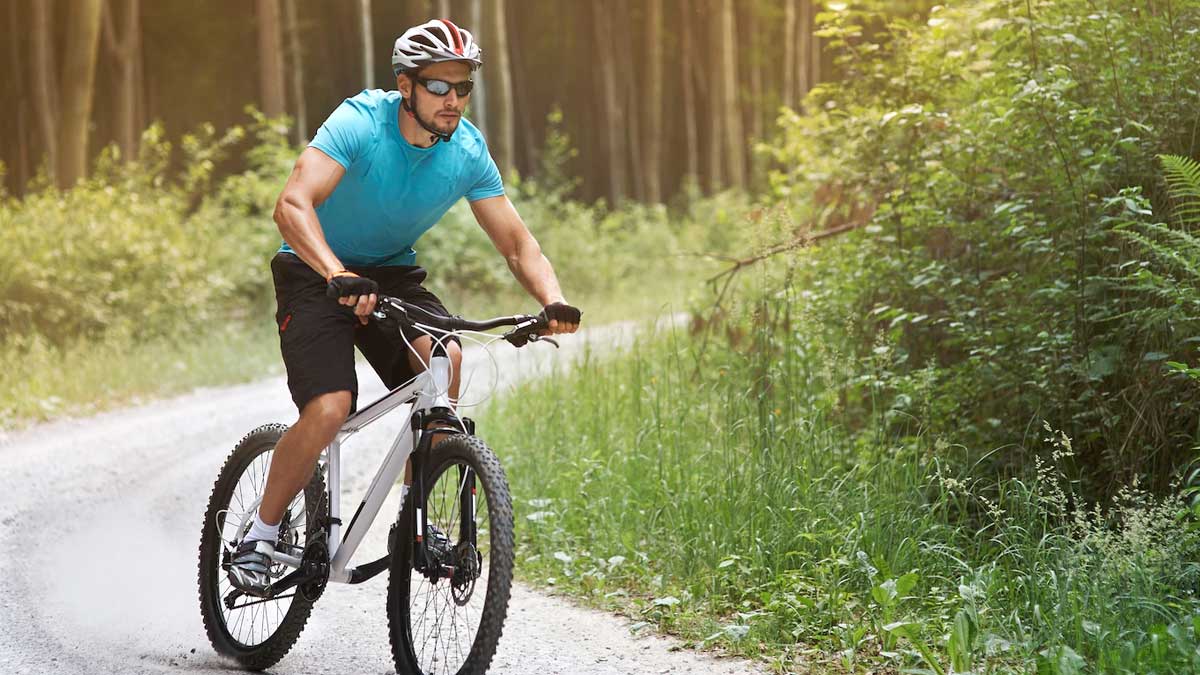
For many, the quest for sculpted, leaner thighs is a common fitness goal. And when it comes to exercises that heavily engage the lower body, cycling often comes to mind. But does hitting the pedals truly melt away thigh fat, or is it more about toning? In an exclusive interaction with us, our expert, Dr Kapil Dave, Director of Sports at Sharda University - Noida, helps us understand the science behind cycling and its impact on your thigh composition. Here is what he shared with us.
Table of Content:-
Understanding Fat Loss
First of all, it's important to know about the idea of 'spot reduction.' It's a common myth that you can lose fat from a certain spot on your body (such as your thighs) by exercising it. "Sorry, but our bodies don't operate on that principle. Fat loss is a systemic thing. When you create a calorie deficit through exercise, your body draws on your total fat reserve for energy, not in your muscles that you're working," Dr Dave highlighted.
Thus, cycling, or exercise in general, won't somehow automatically vanish fat only from your thighs. Yet that doesn't imply cycling isn't very effective at shedding overall body fat, which will result in decreased thigh fat as part of an overall body change.
How Cycling Helps Transform Your Thighs
Cycling does not directly spot-reduce, but it's a very useful tool for getting leaner, toned thighs through a number of mechanisms:
1. Calorie Burn and Total Fat Loss
Cycling is a great cardiovascular activity. Whether cruising outside or spinning on a stationary bike, steady pedaling really jacks up your heart rate and burns a significant number of calories. To lose fat, you must be in a caloric deficit – you must burn more calories than you take in. Cycling regularly assists in establishing and sustaining this deficit, resulting in total fat loss, including from the thighs.
Also Read: 10 Morning Habits That Can Help Prevent Blood Sugar Spikes

2. Muscle Use and Toning
Cycling is an excellent lower-body exercise. It really uses your:
- Quadriceps: The big front thigh muscles are the movers, using their downward push on the pedals. Regular use builds strength and definition.
- Hamstrings: In the back of your thighs, these muscles are used together with the quadriceps, especially on the upward phase of the pedal stroke.
- Glutes: Your glute muscles also play a major role in creating power and pushing you forward. These muscles strengthen and tone themselves with every ride as you cycle. When you lose the fat overlying these muscles, their enhanced definition becomes more visible, making your thighs look leaner and more sculpted. You are not bulked up but lean-muscled, which makes your thighs look firmer and more streamlined.
3. Better Body Composition
Increasing muscle through cycling may also enhance your body composition. Muscle tissue is a more metabolically active tissue than fat tissue and therefore burns a greater number of calories even when at rest. The more lean muscle you possess, the greater your resting metabolism, also helping you achieve long-term fat loss.
Optimising Your Cycling for Thigh Fat Loss
To maximise the use of your cycling exercise for thigh change, take the following approaches:
- Consistency is everything: Target a minimum of 150 minutes of moderate-intensity cycling or 75 minutes of vigorous-intensity cycling each week. It's much more effective to be consistent over time rather than occasionally do an intense session.
- Steady-State Rides: Longer, moderate-intensity rides are great for burning fat and improving endurance.
- Interval Training (HIIT): Add brief spurts of high-intensity pedaling with recoveries. HIIT increases calorie burning, cardiovascular capacity, and can even increase muscle growth.
- Hill Climbing/Resistance Training: Climbing hills or adjusting the resistance on a stationary bike to its hardest level intensely engages your thigh muscles to build increased strength and definition.
- Correct Form: Make sure your bike is correctly fitted to your body. Keep your knees slightly bent when pedaling and activate your core muscles for stability. Concentrate on a smooth pedal stroke, pulling down and pushing up to engage the muscles as much as possible.
- Pair with Strength Training: While cycling engages your thighs, adding specific strength exercises such as squats, lunges, and leg presses to your regimen will enhance muscle development and tone as well.
- Nutrition: Remember, exercise alone isn't enough. A balanced diet rich in whole foods, lean proteins, and healthy fats, coupled with a caloric deficit, is essential for sustainable fat loss.
Conclusion
While cycling will not 'spot reduce' thigh fat, it is an extremely effective and fun exercise for overall fat reduction and toning of your leg muscles. With regular and varied cycling workouts included as part of a comprehensive health and wellness regime, you can definitely pedal your way towards more toned, leaner, and stronger thighs.
Also watch this video
How we keep this article up to date:
We work with experts and keep a close eye on the latest in health and wellness. Whenever there is a new research or helpful information, we update our articles with accurate and useful advice.
Current Version